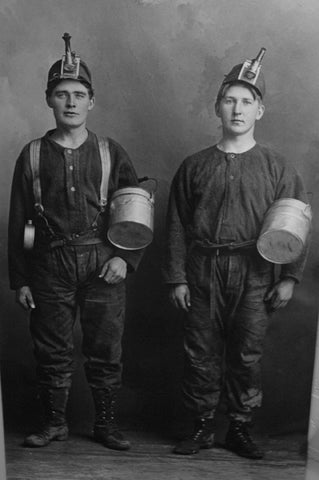Destination: Red Lodge, Montana
Red Lodge is rich in history and recreation
By DAVID REESE, Montana Living
If you have a budding historian in your family or just want to get away to a quiet town with a funky mountain appeal, you should point your car toward Red Lodge.
Just an hour’s drive from Billings — or about six hours from Missoula — Red Lodge exudes small-town charm. Perhaps the real story in Red Lodge is the history. The county seat of Carbon County, Red Lodge is a motherlode of coal mining history and Montana lore. Just six miles away from Red Lodge is the tiny town of Bear Creek, the site of Montana’s worst mining disaster, where over 70 men died in 1943.
There are no formal tours, but a drive through the town will give you a sense of the hard work that miners once endured. In Red Lodge proper is the Carbon County museum, a treasure trove of historical information, not just on mining but also cowboy lore.

Scott Ping pulls a skier in the National Skijoring Championships in Red Lodge, Montana. Photo by David Reese
The cowboy lifestyle continues every year in the spring, when Red Lodge plays host to the National Skijoring Championships. (If you don’t know what this is, it’s basically skiing behind a horse — really fast.) Cowboys and skiers from around the United States arrive to challenge the short, oval course, and it’s a good family spectator sport. If you tire of more than a day of that, head up to Red Lodge Mountain ski area for some family-friendly turns on this homey Montana ski area.
Wide runs that are perfect for cruising give you plenty of room, and a quaint lodge awaits you at the bottom of the mountain.
It seems more people are finding these kinds of amenities appealing, and real estate developments are sprouting up. As the town expands and works to accommodate new families, workers and baby boomer retirees, Red Lodge is in the process of adding new healthcare facilities. The community is developing 13 acres into a healthcare campus in conjunction with St. John’s Healthcare.
The town’s existing 50-year-old hospital is “just worn out,” says Pete Critelli, a community organizer and booster. The new facility is expected to open in 2008.
“The community is energized, and it’s growing,” says Critelli. “There are a lot of interesting people coming in here.” The town has about 2,200 residents, in a county of about 9,000. The synergy of the town is an eclectic mix of newcomers and longtime locals.

Downtown Red Lodge. Photo by David Reese
Once just a stopping place on the way to Yellowstone National Park for people like “Liver Eatin’ Johnson,” now there are food, dining and accommodations that are making Red Lodge a place to hang around … or live, says Critelli. IT used to be just a place to get gas,” he said. “Now it’s a destination.”
The downtown is a thriving mix of art galleries, restaurants, gift stores and bars. The town has a small-town appeal that folks find charming and welcome. “There are no stop lights here, and we like it that way,” Critelli said.
The Pollard Hotel anchors one corner block of the downtown. It’s a central hub of activity, and is close that all Red Lodge has to offer.
Manager David Gibson has come to realize just how important a role the hotel plays in the community. The 116-year-old Pollard, with its classic red brick exterior, is one of the longest, continually operated hotels in Montana. Early guests included Calamity Jane, Buffalo Bill and William Jennings Bryan.
The hotel was built in 1893 by the Rocky Fork Coal Co., whose early investors included Rockefellers and other powerful men looking to profit from the abundant coal in the area.
Photo of coal miners at the Carbon County Historical Society in Red Lodge, Montana
The town is alive with Montana history. In 1897, notorious outlaws Sundance Kid, Kid Curry and other members of the “Wild Bunch” rode into Red Lodge after escaping from jail in Belle Fourche, South Dakota, and announced their intention of robbing the Carbon County Bank, a brick building across the street from the Pollard Hotel. They botched the job, and sheriff John Dunn and his posse captured the men near Lavina, Mont. The men were returned to the Deadwood, South Dakota, jail, which they escaped again.
The Carbon County Historical Society’s museum, in downtown Red Lodge, puts it all in perspective, from early-day mining, to cowboys and outlaws.
You’ll also see on display things like the antique “electro-shock therapy machine,” which was said to have treated ailments from asthma, nymphomania, impotence, diabetes and hysteria.
Red Lodge has been home to many well-known cowboys and the museum tells their stories. Bill Linderman, a Red Lodge man, was called “King of the Cowboys, and as the two-time world champion was the highest-paid professional cowboy in the 1950s.
Clint Branger, another accomplished professional cowboy, grew up in Red Lodge and founded the Professional Bull Riders in 1992. Deb Greenough was another Red Lodge cowboy who went on to rodeo fame.
Western history comes alive at the museum. Chief Sitting Bull’s .45 caliber gun, which he surrendered to U.S. troops after returning to the United States following the Battle of the Little Big Horn, is on display.
A huge antique gun selection donated by the Waples family showcases 45 long guns and 23 hand guns used by Indians, the Army, gold seekers, hunters and homesteaders.
The museum is loaded with history and education about coal mining, and the coal-mining display at the museum is perhaps the most authentic and informative piece of the museum.
Most of the buildings in downtown Red Lodge, as well as classic homes in the nearby High Bug district, are on the National Register of Historic Places.





